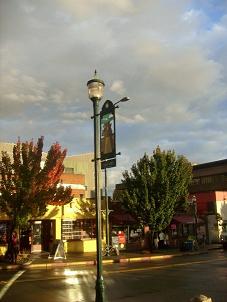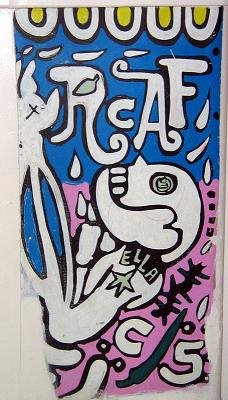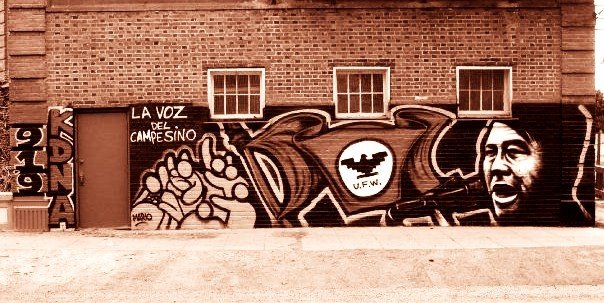 |
| Intersection where the Seattle Police shot Mr. Williams. |
Woodcarver was shot four times in his side by officer, autopsy shows
John T. Williams, the First Nations woodcarver fatally shot by a Seattle police officer Aug. 30, was struck by four bullets on the right side of his body, indicating he was not facing the officer at the time the shots were fired, the attorney representing the Williams family said Tuesday.
John T. Williams
Woodcarver was shot four times in his side by officer, autopsy shows
Seattle Times staff reporter
John T. Williams, the woodcarver fatally shot by a Seattle police officer Aug. 30, was struck by four bullets on the right side of his body, indicating he was not facing the officer at the time the shots were fired, the attorney representing the Williams family said Tuesday.
"There's nothing looking like he was facing toward him," Seattle attorney Tim Ford said of Williams' position as the officer fired. "It was all right side."
Ford, in an interview with The Seattle Times, provided a portion of an autopsy report prepared by the King County Medical Examiner's Office relating to the gunshot wounds.
Ford questioned whether the officer needed to shoot if Williams wasn't directly facing him. "... Where is the threat?" he said.
Seattle police have previously said that Officer Ian Birk fired four rounds from a distance of nine to 10 feet. But police officials have not disclosed where Williams was struck, how many times or the precise positions of Birk and Williams.
Sgt. Sean Whitcomb, the department's chief spokesman, said he couldn't comment on autopsy results because of confidentiality rules governing the investigation.
Sgt. Rich O'Neill, the president of the Seattle Police Officers' Guild, said Tuesday that he could not comment on the shooting investigation. But O'Neill said, in general, an armed person who is standing sideways to an officer can still pose a threat.
Birk, 27, shot Williams at Boren Avenue and Howell Street after he stopped his patrol car at a red light and saw Williams carrying a small knife that turned out to be used for carving.
Williams, 50, who was a member of Nuu-Chah-Nulth First Nations in British Columbia, ignored three commands to drop the knife, police officials said. The department originally said Williams advanced on Birk, but later retreated on that statement.
Video from a camera in Birk's patrol car, which hasn't been made public, shows Williams crossing the street in front of Birk and, moments later, the officer crossing in front of his car to the northwest corner of Boren and Howell, Deputy Police Chief Nick Metz said at an Aug. 31 news briefing.
The camera did not capture video of the shooting, but Birk can be heard on an audio recording ordering Williams three times to drop the knife, Metz said at the briefing.
Williams collapsed on the sidewalk along Howell Street, where he was pronounced dead.
Williams had been standing and facing north when he was struck by the shots, Ford said, citing witness accounts. Birk had approached Williams from the side, in an east-to-west direction, stopping just to the east of Williams, Ford said.
Williams was shot once in the right chest, with an exit wound in his left armpit, according to the autopsy report. A second shot entered the right side of Williams' chin, with an exit wound on the left side of his chin, the report said.
Williams was shot a third time in his upper right arm, the report said. The round exited the arm and then entered and exited his chest, according to the report.
A fourth shot struck Williams' right forearm, exiting through the upper arm, the report said.
Ford said that the autopsy didn't show in which order the shots were fired, but that ballistics experts might be able to determine that.
It has not been disclosed in which hand Williams was carrying the legal, 3-inch folding knife recovered by police at the scene.
The autopsy report also noted that a pair of headphones attached to an AM-FM radio were found with Williams' body, Ford said. The report didn't specify where the headphones were retrieved, Ford said.
Williams' family has said he probably didn't even hear the officer command him to drop the knife because he was deaf in one ear and wearing headphones.
Whitcomb, the police spokesman, said autopsy results were available to the department's Firearms Review Board, which completed a confidential inquiry into the shooting during a one-day proceeding that ended Monday evening.
The board was to determine if the shooting was justified, not justified or accidental and submit its preliminary findings to Police Chief John Diaz.
Diaz was to make his own preliminary confidential finding, pending an expected King County court inquest that could bring out more information.
In a written statement released Tuesday, the department said, the confidential preliminary findings have been submitted to Diaz. "Per Department Policy — and to support the integrity of the upcoming King County Inquest — the Department will not comment on any findings or recommendations," the statement said.
The Firearms Review Board will reconvene after the evaluation of criminal liability by the inquest jury and King County prosecutor, the statement said.
Birk, who joined the department about two years ago, will remain on routine paid administrative leave.
Information from Seattle Times archives is included in this report.
Steve Miletich: 206-464-3302 or smiletich@seattletimes.com
Copyright © The Seattle Times Company





.jpg)
.jpg)






.jpg)
